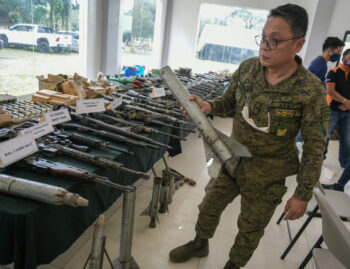[Summary of a presentation by Commissioner Yusuf Morales of the National Commission on Muslim Filipinos during the launch of the Japan-UNDP program on the Prevention of Violent Extremism on August 6, 2018 at the Ateneo de Davao University. The is an attempt to present a critique in presenting the gaps encountered in researches on prevention and countering violent extremism (PCVE) in the Philippines]
Introduction
Before we present a critique or the gaps in PCVE research, allow us first to have a level understanding of what violent extremism is by key words and ending in a simple definition of the term.
The key words that we should use should be anti-state discourse, hate discourse directed at ideological enemies. In a nutshell, violent extremists reflect and present an anti-system discourse, and this is also manifested by their inability to accept differences of opinion, which means that they are highly opinionated, and practically driven towards an ideological good rather than a common good. If we sum this up, we can say that violent extremism primarily is the belief of individuals, groups and institutions in an ideology that in order to achieve their goals and objectives, they may utilize violence and terrorism in the realization or actualization of their goals (Morales, 2015)
Context
But before we proceed further, allow me to give, in the millenials’ language, a shout out that it is important to understand where the blank spaces are in the conduct of researches in understanding what causes shifts in movement of mass movements, peoples organizations to gravitate towards violent extremism
Concerns
In a way, it’s all about understanding echoes (messaging and narratives) and how these echoes affect each particular strata of the vulnerable spectrum.
Among the first things we may need to consider is, have we done an analysis of the cross-over narratives from genuine revolutionary organizations and the local threat groups? Have we understood the reasons and factors how the messaging is crafted to be able to win the hearts and minds of young people to cross over to revolutionary organizations?
Or how the messages are used to have people from genuine revolutionary organizations cross over to local threat groups? Or to recruit young people to join local threat groups? Are we able to efectively read how the messaging is resonated and responses crafted?
The second concern is have we considered intergenerational narratives and responses towards PCVE on the ground?
Understanding what is the nature of people, like those pre-Martial law (born before 1972), pre-millennials (Generations X,Y and Z), and millennials, how they appreciate and respond to the narratives of violent extremists and counter-narratives that are circulating both in cyberspace and other forms of media. Have we seen and managed to dissect them and analyze how each stratification managed to gain credence and access to people? It is important to understand that there are intergenerational differences to specific media access like radio, TV, internet and even social media, and this spells the difference as to how the capture process happens.
Thirdly what is the national echo on violent extremism? Does everybpdy agree even on the basic concept of what violent extremism is all about? How do people respond to the very concept of violent extremism? It appears that violent extremism has become a trend both among those who implement basically other programs as non-government organizations or institutions, as well as individuals who are fed up with socio-economic and politico concerns in the country. This has indeed become both a lucrative trend and a national security concern. How do people view the difference between violent extremism and rebellion? How do the Muslim converts and Filipino Muslims view social anger and their responding towards violent extremism?
Fourth is how are these programs on PCVE responded to on the ground? Have we seen how is the response when each conducts these activities in let’s say government agencies, civil society, the academe, youth or communities? How is the response of communities if government conducts it or if CSOs or academe conducts it? What was the response and reflection of perceptions when each program was done?
It is important also to conduct an audit of programs that directly or indirectly affect PCVE. The question now arises, have we done an accurate audit of VE programs?
Have we evaluated government, civil society organizations, the academe, the non-government organizations on their impact and how they have influenced their constituencies? Was there an assessment of the cost-benefit analysis? meaning with the program implemented relative to the cost undertaken for the program. was the feedback taken by third party evaluators during assessment or was it taken by their own program implementor? How was the process done?
One important aspect that I believe we fail to address fully: how have we responded to the narratives of violent extremism? Have we done any attempt of actually engaging with violent extremists or communicators of VE? Have we done an assessment of who are the partners we have worked with like religious leaders and teachers, civil society partners, the academe and international organizations?
I hope this feedback would enable us to move forward in our continuing research and understanding of violent extremism.







